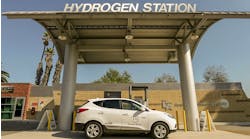Consider the scale of the mechanical and plumbing systems required to support a large, multi-building academic health sciences/research center. If the piping were laid in a straight line, it would run for miles. Add to this as much as a million pounds of ductwork from multiple air-handling units. Together, the buildings might have a dozen different mechanical systems supporting the distribution requirements for conditioned air, chilled and processed chilled water, hot water, steam, natural gas, medical gases and more — a number of these systems subject to research-laboratory quality standards.
Getting these systems installed and running while carrying out activities from other building disciplines requires a great deal of coordinated effort. A university and its facilities-management team should be sure that the project team is employing the technology, communication and coordination strategies needed to get the job done right.
A virtual project
Advances in 3-D computer-aided drafting technology have made it possible for mechanical contractors to identify architectural, structural and other issues that could create conflicts. Computer modeling allows design and construction teams to build virtual projects with great accuracy, and saves significant time and money during construction.
A mechanical contractor can begin a project by taking architectural, structural, mechanical, electrical and plumbing engineering drawings and converting them into 3-D CAD models. Using modeling, the contractor can identify the most efficient way to install the systems, starting with the pitched pipe (for steam, stormwater and sanitary waste) and large sheet-metal ductwork, and working “out and up” from there.
At the same time, a contractor's field project team, including the job-site managers that will direct the subcontractors, can examine the drawings to identify potential issues that must be researched with school administrators and other project team members.
In some cases, before a section of the building is constructed, a crane may need to be used to put large air-handling equipment into place. It may be necessary to build temporary structures, such as ramps, and install additional structural supports to move and support that equipment. This requires coordination with the general contractor, architect and engineers. In this case, the team should consult with the structural engineer to determine whether the unfinished structure will have the capacity to pick up the required weight in this area.
The mechanical contractor's CAD group and field operations group should meet weekly to monitor the modeling process as it evolves. The field operations group brings project details to the CAD department, and the CAD department produces the construction documentation for use in the field. As the project progresses, the CAD department should incorporate the as-built drawings into 3-D CAD models.
Updated construction documents should be available to all members of the project team, as well as the mechanical and plumbing subcontractors, so their own CAD and field operations groups can identify areas of concern. This communication is key in such large, complex projects.
At the same time, effective communication with the architect and the mechanical, electrical, plumbing (MEP) engineer — through a formal request for information (RFI), in-depth project team meetings, and regular telephone and e-mail contact — will help maintain the project schedule and boost the odds that the project will be successful.
Outside the loop
During construction, “standard communication procedure” calls for the mechanical contractor to notify the general contractor when issues arise. It also is important for the mechanical contractor to talk to the people that often are perceived as outside the loop.
For example, an expansion project adjacent to a building under construction by a different project team must be examined in order to ensure effective coordination. The mechanical contractor should be willing to contact school officials and the general contractor of the other project directly to discuss the status of each project. On a tightly packed campus where several projects are underway, inter-project coordination is essential for effective construction staging, such as placement of a crane to hoist mechanical equipment to the roof.
To ensure a successful project, the mechanical contractor also should be in contact with the facilities-management department to aid in communication with the general contractor.
Strict standards
Direct communication with researchers and lab technicians ensures that a project meets strict quality standards. As a result, a mechanical contractor can learn important information about the laboratory, mechanical and plumbing systems from its users. Sometimes researchers and lab technicians have preferences for a particular manufacturer, or even a type of valve. Researchers also benefit from getting to know the people installing the systems; they learn who to call if a problem arises.
With so much at stake in expanding an academic health sciences/research complex, it is essential that as soon as planning begins on a project, an institution bring in a mechanical contractor with 3D-CAD modeling and other technological capabilities, related experience, and communication skills. This creates the maximum opportunity to develop the teamwork, system of checks and balances, and continuity that contribute to the long-term success of a new facility.
Continuity of communication among the mechanical contractor, school administrators and the facilities-management department is key to the long-term success of the mechanical systems.
Coffey is vice president and project manager for Trautman & Shreve, Inc. — a subsidiary of EMCOR Group, Inc., Denver, which provides mechanical and electrical construction, energy infrastructure and facilities services.
University of Colorado Health Sciences Center expands research program
A growing biomedical research program prompted the University of Colorado at Denver Health Sciences Center (UCDHSC) in Aurora, Colo., to expand its Fitzsimmons campus. UCDHSC at Fitzsimmons is composed of five schools, two teaching hospitals and the National Cancer Institute-designated University of Colorado Cancer Center.
One of the most challenging parts of the expansion was the 628,000-square-foot Research Complex One (RC1), which houses biomedical, biotechnology and pharmaceutical operations in a nine-story north tower, a 12-story south tower, and a three-story auditorium. The $45 million contract for the mechanical system included more than 75 miles of piping, 20 miles of pneumatic temperature control conduit and 1.4 million pounds of ductwork. Seventy-five percent of these systems were situated in a 26,000-square-foot vivarium interstitial space that was installed and tested within a 24-month build-out and six-month commissioning schedule.
The project called for the mechanical contractor to develop fully coordinated 3-D CAD drawings, including schematics for the structural, electrical, fire-protection, mechanical and plumbing systems. This enabled the project team to identify conflicts in architectural, structural and other drawings and coordinate proper construction documentation.
Installation of the mechanical, plumbing, medical gas, and electrical systems in a 10-foot-high interstitial space above the vivarium required efficient coordination among the six subcontractors, who worked from the ceiling down and across the building. Communication with the scientists and technicians assured that strict quality guidelines were met.
RC1 contains 20 research departments and 241 labs. A compact mechanical system design uses 58 riser groupings, each of which consists of seven different piping systems with more than 400 individual pipe risers. Each system in each group branches out from its respective riser at each level to the lab stations. This design provides maximum flexibility for future expansion with minimal impact on the main utility infrastructure.
To meet the specific temperature and air-quality requirements of each lab, the HVAC system has 10 large custom air-handling units with more than 736,000 CFM and an extensive rooftop exhaust fan system. Steam, condensate and chilled water are supplied from a central utility plant situated more than 500 feet away through three 12-inch piping loops buried 40 feet below ground. Trenching and installation were coordinated so as not to affect several smaller buildings under construction along this route, as well as other buried utilities. Engineers helped re-design the 740-square-foot mechanical room to accommodate the piping and associated mechanical equipment.
The 3-D CAD modeling, construction experience, communication and coordination, allowed the mechanical contract to be completed on time and within budget.

